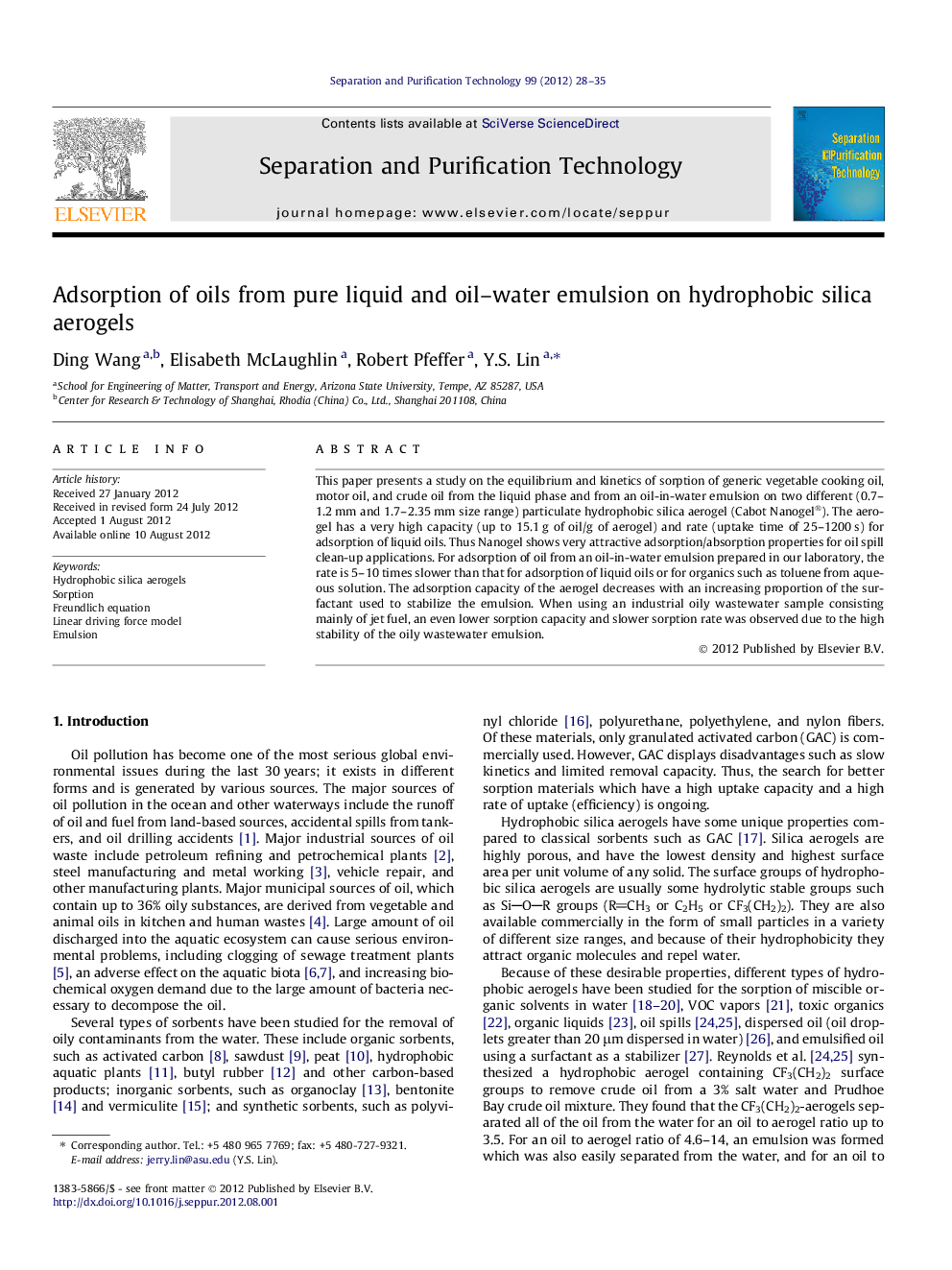| Article ID | Journal | Published Year | Pages | File Type |
|---|---|---|---|---|
| 641983 | Separation and Purification Technology | 2012 | 8 Pages |
This paper presents a study on the equilibrium and kinetics of sorption of generic vegetable cooking oil, motor oil, and crude oil from the liquid phase and from an oil-in-water emulsion on two different (0.7–1.2 mm and 1.7–2.35 mm size range) particulate hydrophobic silica aerogel (Cabot Nanogel®). The aerogel has a very high capacity (up to 15.1 g of oil/g of aerogel) and rate (uptake time of 25–1200 s) for adsorption of liquid oils. Thus Nanogel shows very attractive adsorption/absorption properties for oil spill clean-up applications. For adsorption of oil from an oil-in-water emulsion prepared in our laboratory, the rate is 5–10 times slower than that for adsorption of liquid oils or for organics such as toluene from aqueous solution. The adsorption capacity of the aerogel decreases with an increasing proportion of the surfactant used to stabilize the emulsion. When using an industrial oily wastewater sample consisting mainly of jet fuel, an even lower sorption capacity and slower sorption rate was observed due to the high stability of the oily wastewater emulsion.
► Hydrophobic silica aerogel (Nanogel) shows a very high capacity and rate of adsorption for oils. ► Nanogel particles are an excellent “sponge” for oil, and can be used for oil spill clean-up. ► Adsorption rate and capacity of Nanogel for oil-in-water emulsion are much lower than that for oils. ► Adsorption capacity of Nanogel decreases with increasing amount surfactant used in the emulsion.
